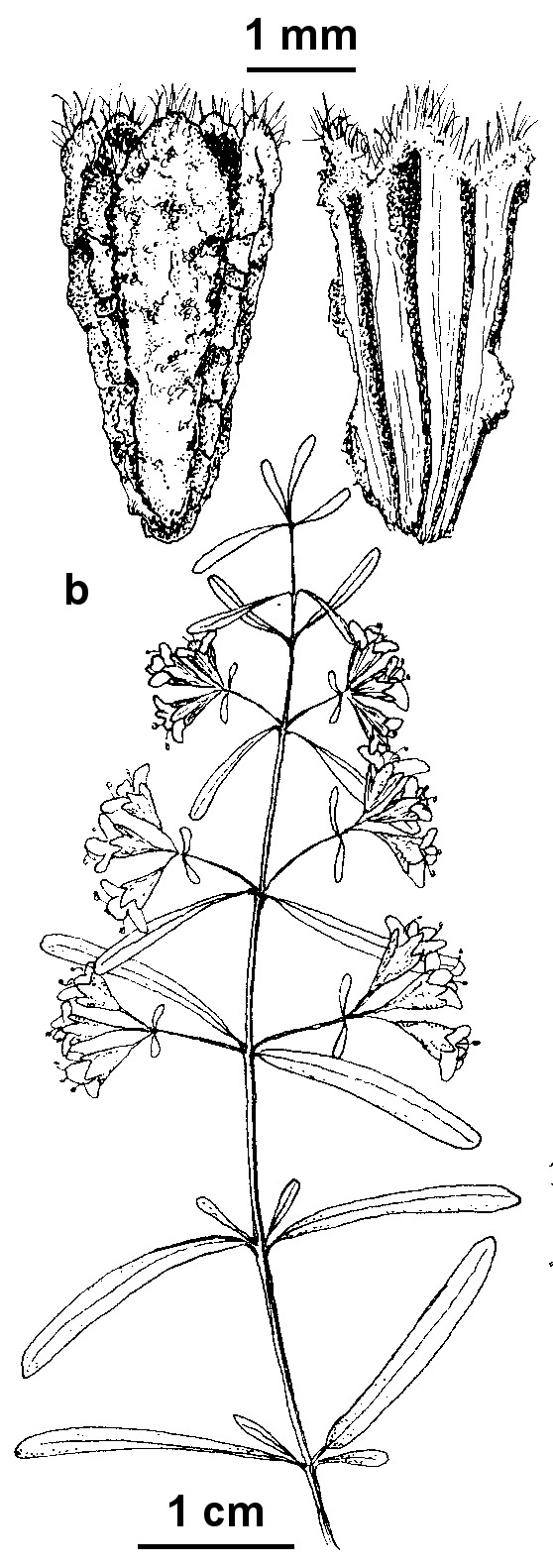Mentha satureioides
R.Br. Creeping MintRhizomatous (sometimes extensively so), often mat-forming herb; branches ascending or prostrate, often rooting at lower nodes, glabrous or covered with short spreading hairs. Leaves narrowly elliptic, 5–35 mm long, 2–7 mm wide, surfaces c. glabrous, apex obtuse or rounded, margin entire; petiole 0–3 mm long. Flowers in 3-flowered clusters in axils of distal leaves; pedicels much shorter than calyx. Calyx 3–4 mm long, 13-ridged, lobes broadly acute, up to half as long as tube, glabrous or with a few hairs outside, inside and margins with dense, long hairs; corolla white or pink, exceeding calyx by 1–3 mm, lobes c. 1–2 mm long, the posterior one bilobed; anthers usually shortly exserted. Flowers throughout the year.
LoM, MuM, Wim, GleP, VVP, VRiv, RobP, MuF, GipP, Gold, CVU, NIS, EGL, EGU, HSF, HNF, MonT, VAlp. Also WA, SA, Qld, NSW. In Victoria mostly north of the Great Dividing Range on heavy, seasonally wet soils. Scattered in southern districts, but distribution likely to include some records of Mentha diemenica.
The current circumscription of Mentha satureioides and M. diemenica represents the extremes of what appears to be a morphological continuum. Many plants show a range of intermediates or combinations of the characters listed in the key. Population studies are required so that the taxonomic status of these taxa can be evaluated.
Conn, B.J. (1999). Lamiaceae. In: Walsh, N.G.; Entwisle, T.J., Flora of Victoria Vol. 4, Cornaceae to Asteraceae, pp. 418–459. Inkata Press, Melbourne.
 Spinning
Spinning


